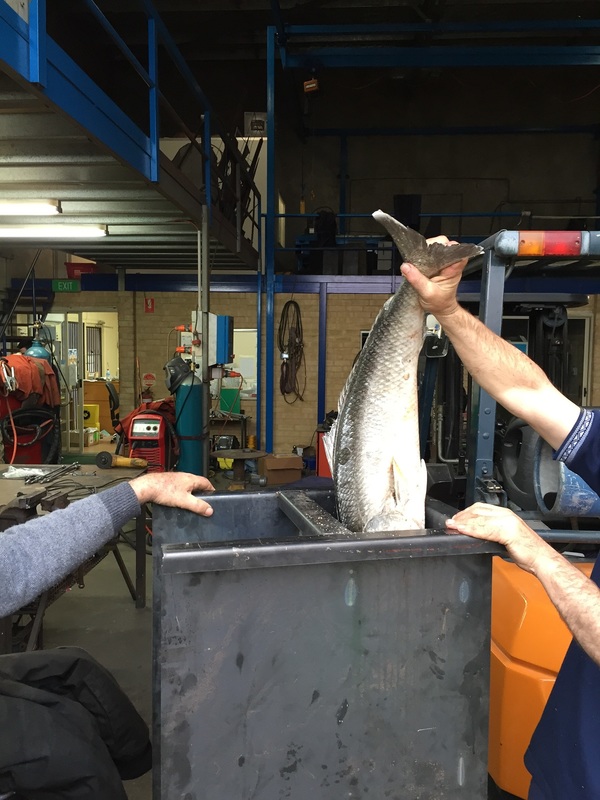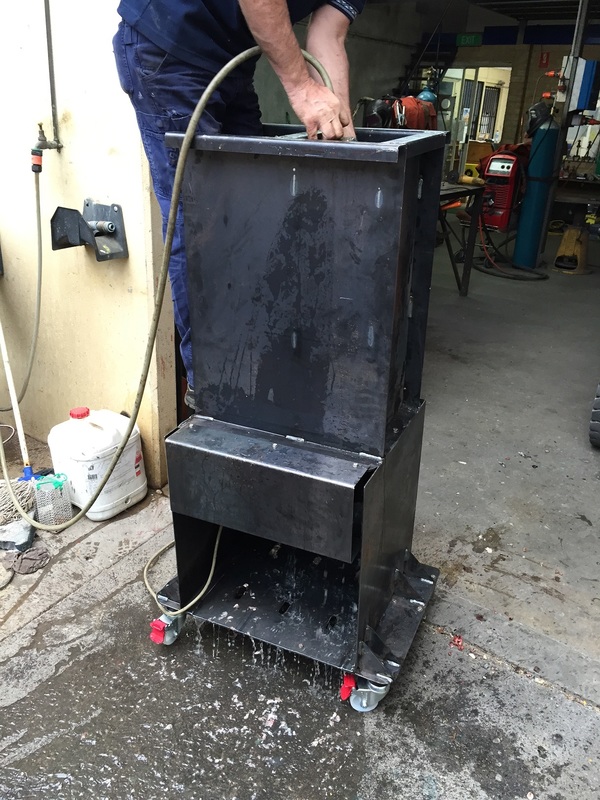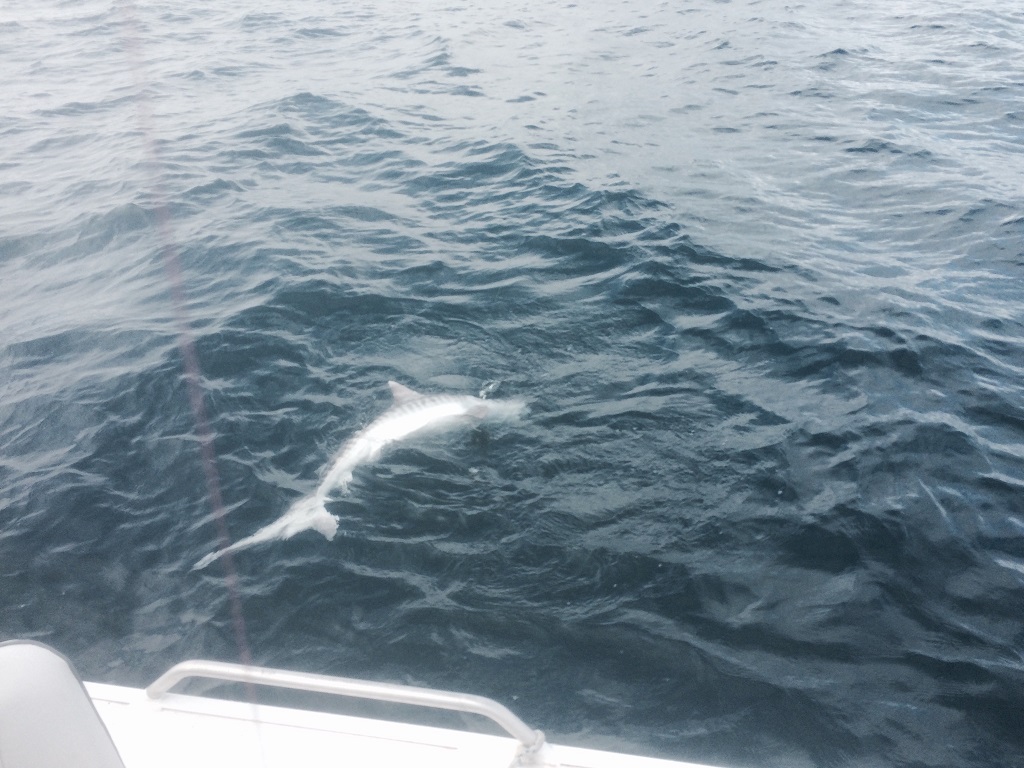After building and testing the Shredder as reported in a previous post (http://fishwrecked.com/forum/shredder-ultimate-burley-machine), we set about refining the design to make it better and safer.
The first and major modification was to fabricate a new set of cutting blades so that there was only one tooth per blade. This was done to provide more cutting power per tooth and stop it jamming when large items were inserted or there was a lot of material in it. The blade teeth were also aligned so that they “spiraled” into the centre so there was a continual feed of partially shredded material into the “zone of destruction”. Also added were cleaning elements for each blade to remove unwanted material and assist in forcing material to the zone.
The first and major modification was to fabricate a new set of cutting blades so that there was only one tooth per blade. This was done to provide more cutting power per tooth and stop it jamming when large items were inserted or there was a lot of material in it. The blade teeth were also aligned so that they “spiraled” into the centre so there was a continual feed of partially shredded material into the “zone of destruction”. Also added were cleaning elements for each blade to remove unwanted material and assist in forcing material to the zone.
Now, as you can tell, the Shredder cutting head is a very nasty piece of gear so it had to be modified to ensure that there was no risk of getting any body parts near the head or drive chain. This was done by “encasing” these bits with solid steel plate to protect the operator and/or any onlookers. The Shredder weighs a lot because of its construction so we needed to make it mobile as it is a bit of a pain moving it with a forklift. Let’s put it on wheels, so that’s what we did. An enclosed hopper area under the cutting head was also fabricated so that a shredded material receptacle could be placed there and any “mess” was contained to the unit. With that done, it was time for a test.
I had a freezer full of frames and various other “waste” from cleaning seafood that I had been collecting. I think it is fair to say that having the Shredder means that our fish waste to landfill is absolutely zero and this is a really good benefit of the machine. I probably had 30-40kg of offal to use in the test. Let’s just say it was evil. The tub in the hopper would fill in less than 5 minutes and the Shredder would eat the stuff as fast as you could put it in. Nothing could stand in its way. The biggest test was a whole frozen 6.2kg salmon that Adam got a month or more ago, that couldn’t be released because it had a 5’0 wedged right down in its gill plate. The body of the fish had no chance but when we got to the head, the deep hook jammed and had to be removed. The head by it shape rolled a bit and it took a bit to grab so needed some help. I don’t think this problem would have existed if the head wasn’t frozen though – just like trying to shred a round block of ice. Needless to say the end result was a quality shred in a couple of minutes.
With the modifications, you can now stand on the Shredder to facilitate simple cleaning with a hose. The clean is easy in a few minutes and due to the design there is almost no fish waste. Roll it into place, lock the wheels, shred away then hose it off, let dry and store. It doesn’t get much better than that.
After seeing the quality use of burley by the “Big Angry Fish” legends from NZ, we have made some big blocks. Add in a bit of oil and filler and we could finally get a block of a similar type. It has to be a good thing to be able to make blocks of that size for use in WA.
Headed out yesterday to give it a try. It attracted plenty of fish and my highlight was getting an approximate 5ft Tiger Shark to release at the boat (25kg+). It certainly liked the burley but we will make blocks of different sizes so that we don’t attract the apex predators in too much of a hurry.
All in all the Shredder is a complete success, and now just needs some paint. Congratulations again to Wal and Dean for building such an awesome device that minimizes fish wastage and produces an excellent, useful end product.










 RSS Feed
RSS Feed
